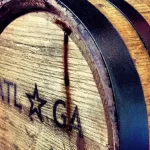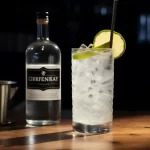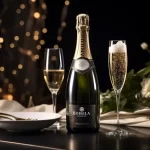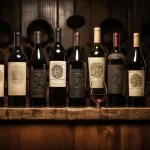If you want to impress your guests with a perfectly crafted cocktail, there are some mixology tips and tricks you should know. In this article, we will cover everything from the essential tools and ingredients to advanced techniques that will help you take your cocktail game to the next level.
Introduction
Mixology is the art and science of creating cocktails. It is a skill that takes time to master, but with the right tools, ingredients, and techniques, anyone can create a delicious and impressive cocktail. Whether you are a professional bartender or a home mixologist, these tips and tricks will help you make better cocktails that will delight your guests.
Essential Tools for Mixology
To create the perfect cocktail, you will need the right tools. Here are some essential tools every mixologist should have in their arsenal:
- Cocktail Shaker: A cocktail shaker is used to mix ingredients and to chill and dilute the cocktail.
- Mixing Glass: A mixing glass is used to stir cocktails and is essential for creating classic cocktails such as the Manhattan and the Martini.
- Jigger: A jigger is a measuring tool used to ensure the correct proportions of ingredients are used.
- Strainer: A strainer is used to strain ice, herbs, and fruit pulp from cocktails.
- Bar Spoon: A bar spoon is used for stirring cocktails and can also be used for measuring small quantities of ingredients.
Essential Ingredients for Mixology
The ingredients used in a cocktail can make or break the drink. Here are some essential ingredients every mixologist should have:
- Spirit: The base of the cocktail is usually a spirit such as gin, vodka, rum, or whiskey.
- Mixers: Mixers are used to dilute and add flavor to the cocktail. Examples include vermouth, fruit juice, tonic water, and soda.
- Bitters: Bitters are used to add flavor and balance to the cocktail. Examples include Angostura bitters, Peychaud’s bitters, and orange bitters.
- Sweeteners: Sweeteners such as sugar, honey, and syrup are used to balance the flavors of the cocktail.
Basic Mixology Techniques
There are four basic mixology techniques that every mixologist should master:
Technique | Description | Equipment Required |
Stirring | Used to create a clear and silky cocktail. Fill a mixing glass with ice, add ingredients, and stir with a bar spoon for 20-30 seconds. Strain into a chilled glass and garnish. | Mixing glass, bar spoon, strainer |
| Shaking | Used to create a frothy and refreshing cocktail. Fill a cocktail shaker with ice, add ingredients, and shake vigorously for 10-15 seconds. Strain into a chilled glass and garnish. | Cocktail shaker, strainer |
| Straining | Used to remove ice and any herbs or fruit pulp from the cocktail. Use a Hawthorne or julep strainer and pour the cocktail into a chilled glass. | Hawthorne or julep strainer |
| Muddling | Used to extract the flavor and aroma of herbs, fruits, and spices. Place the ingredients in the bottom of a cocktail shaker or glass, and gently crush them with a muddler. | Muddler, cocktail shaker or glass |
Advanced Mixology Techniques
Once you’ve mastered the basics, you can start exploring more advanced mixology techniques that will take your cocktails to the next level. Here are some techniques to try:
| Technique | Description |
| Flaming | Used to add a dramatic effect and aroma to the cocktail. Pour a small amount of high-proof spirit over the ingredient and ignite it with a lighter or match. |
| Smoking | Used to add a smoky flavor to the cocktail. Place wood chips in a smoking gun or a covered container, fill it with smoke, then add the cocktail ingredients and stir or shake. |
| Carbonating | Used to add bubbles to the cocktail. Use a carbonation system or add carbonated water or soda to the cocktail. |
| Fat Washing | Used to infuse the cocktail with the flavor of fat. Add fat such as bacon grease or butter to a spirit and let it infuse for several hours or overnight. Then, strain the mixture to remove the fat. |
Tips for Garnishing
Garnishing is the final touch that can take a cocktail from good to great. Here are some tips for garnishing:
- Use fresh and seasonal ingredients.
- Match the garnish with the flavors and aroma of the cocktail.
- Use edible flowers, herbs, and fruits to add color and texture.
- Use citrus twists, zest, and oils to add a burst of flavor.
Tips for Balancing Flavors
Balancing flavors is the key to creating a delicious and harmonious cocktail. Here are some tips for balancing flavors:
- Use the right proportions of spirit, mixer, and sweetener.
- Adjust the sweetness, acidity, and bitterness to your liking.
- Use bitters to add depth and complexity to the cocktail.
- Taste the cocktail as you go and make adjustments as needed.
Tips for Making Better Mocktails
Mocktails are non-alcoholic cocktails that are perfect for guests who don’t drink alcohol. Here are some tips for making better mocktails:
- Use fresh and flavorful ingredients such as fruit juice, herbs, and spices.
- Use syrups, bitters, and shrubs to add complexity and depth to the mocktail.
- Experiment with different textures and temperatures.
- Use garnishes to add visual appeal and aroma.
Conclusion
Mixology is a skill that takes time to master, but with the right tools, ingredients, and techniques, anyone can create a delicious and impressive cocktail. By following these mixology tips and tricks, you’ll be able to impress your guests with perfectly crafted cocktails that will delight their taste buds.
FAQs
What is mixology?
- Mixology is the art and science of creating cocktails.
What are the essential tools for mixology?
- The essential tools for mixology include a cocktail shaker, mixing glass, jigger, strainer, and bar spoon.
What are the essential ingredients for mixology?
- The essential ingredients for mixology include spirits, mixers, bitters, and sweeteners.
What are some basic mixology techniques?
- Some basic mixology techniques include stirring, shaking, straining, and muddling.
What are some advanced mixology techniques?
- Some advanced mixology techniques include flaming, smoking, carbonating, and fat washing.
How do I balance flavors in a cocktail?
- You can balance flavors in a cocktail by using the right proportions of spirit, mixer, and sweetener, adjusting the sweetness, acidity, and bitterness, using bitters to add depth and complexity, and tasting the cocktail as you go.
What are some tips for making better mocktails?
- Some tips for making better mocktails include using fresh and flavorful ingredients, using syrups, bitters, and shrubs to add complexity, experimenting with different textures and temperatures, and using garnishes to add visual appeal and aroma.
Can I substitute ingredients in a cocktail recipe?
- Yes, you can substitute ingredients in a cocktail recipe to suit your taste preferences or to use what you have on hand. However, keep in mind that substituting ingredients can affect the flavor and balance of the cocktail.
How important is garnishing in a cocktail?
- Garnishing is important in a cocktail as it adds color, texture, and aroma, and can enhance the flavor of the cocktail.
Do I need to use expensive spirits and ingredients to make a good cocktail?
- No, you don’t need to use expensive spirits and ingredients to make a good cocktail. With the right techniques and proportions, you can create a delicious and impressive cocktail using affordable ingredients.









